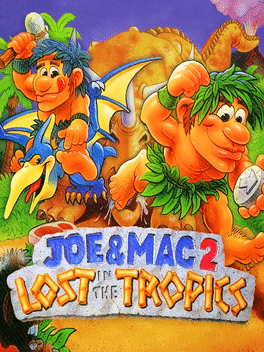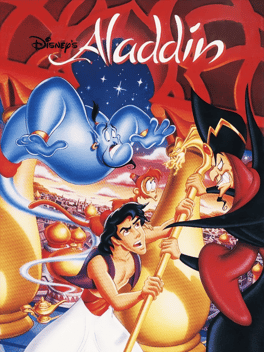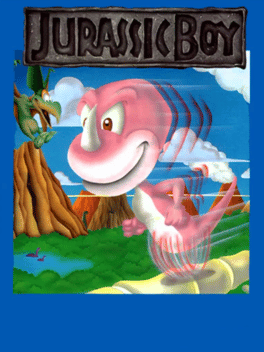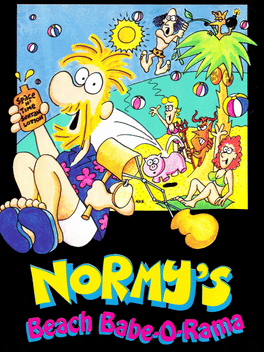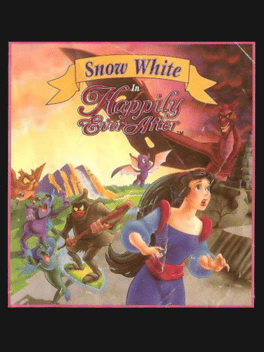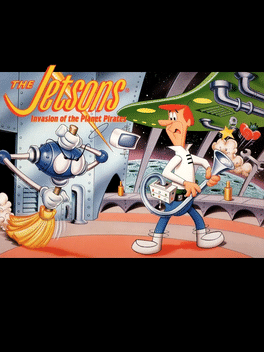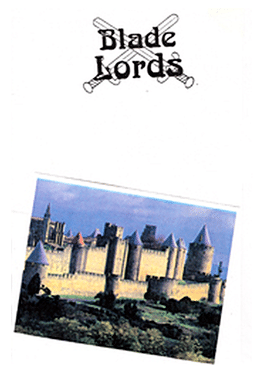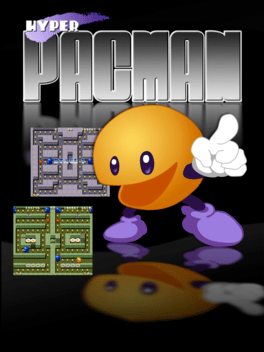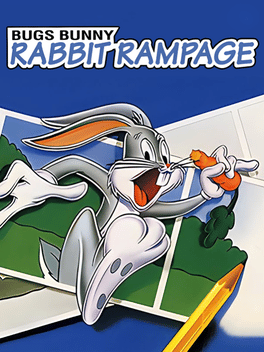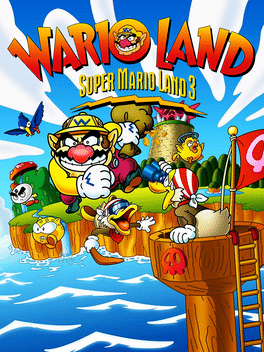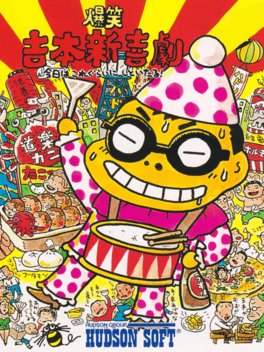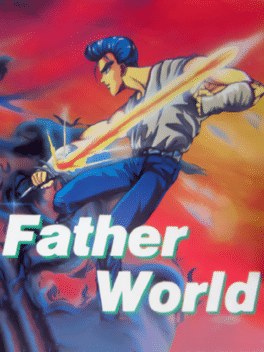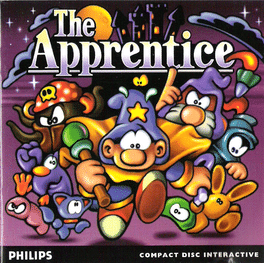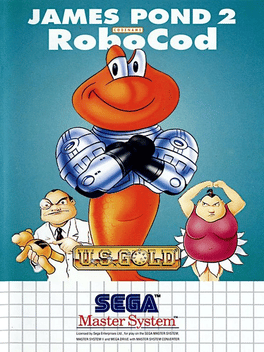New Platform Games - Page 214
-
Joe & Mac 2: Lost in the Tropics
1994
star 6.4Improving on the original's platformer/brawler co-op gameplay, this game adds adventure and role-playing game elements that create a more involving experience compared to the first game. You can now collect coins in the levels to purchase items from Tiki Village, such as meat to recover your health, or even remodel your hut back at your home village. The game also uses a password system to track your progress. The game also shifts to an overhead map so you can wander to whichever level you wish, and return to completed levels to earn more money or power-ups. -
Mr. Nutz: Hoppin' Mad
1994
Similarities with the other Mr. Nutz game only go as far as the title and main character, although both are side-scrolling platform games. Mr. Nutz the squirrel is holidaying on Peanut Planet when he's called into action to save the local people from a race of chickens. Nutz can fly, swim and dive through the planet on his quest. The level layouts include tunnels and warp zones. Bonus items and additional weapons including bombs are available along the way. -
Tony & Friends in Kellogg's Land
1994
A promotional platformer for Kellogg's Cereal released in 1994 in Germany. -
Disney's Aladdin
1994
Disney's Aladdin
1994
star 7.5This version of Disney's Aladdin is a completely different game than either the SNES or Genesis versions, and was only released for SEGA's 8-bit systems, Master System & Game Gear. It has a classic-era Prince of Persia kind of gameplay. Like the other versions, it is a side-scrolling action game. The player controls Aladdin, making his way through a variety of locations, including the streets of Agrabah, the Cave of Wonders, the Sultan's palace and more. Gameplay takes several different forms: some levels are chases, where Aladdin runs automatically, but must be made to jump over chasms or rolling rocks and barrels, evade falling objects and avoid getting caught by a guard. Other levels are platforming affairs: Aladdin must run, jump and climb, find keys or switches to open doors while searching for the exit. Rocks can be collected and be thrown to dispatch enemies or hit buttons otherwise out of reach. Finally, there are also several magic carpet rides in the game, in which the level scrolls automatically and the -
Jurassic Boy 2
1994
Jurassic Boy 2
1994
In the year 2193, '"Dinosaur" becomes a popular subject again. Scientists all work for making dinosaur revive. 'Nevertheless, they still lack of a special gene. This causes the dinosaurs they cultivate are all incomplete. 'Many countries then intend to buy dinosaurian fossil at high prices in order to get the gene. 'But it seems that it's not so easy. 'No one can do anything to this problem until Dr. Crachi invents a "Time Space" machine in the year 2197. -
Normy's Beach Babe-O-Rama
1994
Normy is one popular surfer, especially with the ladies on the beach, however one day a UFO appears and kidnaps all the ladies on the beach and it is up to Normy to travel to 29 different alien worlds to bring them back to Earth. The gameplay is a side-scrolling action game, controlling Normy and fighting off various bad guys scattered throughout the stage using weapons such as glove extending hammers or beaver mallets. There are also puzzles that need to be solved at times to advance on, various pitfalls and traps to avoid, and six different bosses to fight. -
Snow White in Happily Ever After
1994
You collect fruit and stars through each level and can jump on some enemies or throw apples at them (which are also used to break through blocks). Be careful as you jump on platforms as going to close to the edge can cause you to lose balance and fall. On the screen, your health is shown by a heart. If you get hit by an enemy, fall down a pit, or fall from too high, it will decrease by one. If it reaches zero, you lose one of three lives. Some special attacks can be used, if possessed, like apple bombs. Eventually a sign "Find The Exit" will appear and you can exit to the next level. If you make it to the end, you must fight Maliss in dragon form. You can change the difficulty level or choose a continuous play option as well. -
The Jetsons: Invasion of the Planet Pirates
1994
George Jetson was about to run out to work when his pal Captain Zoom appears out of thin air. Zoom tells him that Zora, the leader of SPREE ("Space Pirates Revelling in Evil Enterprises"), is planning on looting this solar system of all its resource! Unfortunately, in his last encounter with Zora, Zoom has used up all his strength and now he is powerless so he asks George to take over. He gives George his Pneumo Osmatic Precipitator (or P.O.P.) and bids him good luck. Can George save his family and this galaxy? Guide George through 9 stages of intergalactic action armed with only his wits and the P.O.P....which is like a super vacuum. The P.O.P. can be used as a traveling tool by sucking onto walls and ceilings, it will enable George to climb up and across platforms. As a weapon, the P.O.P. can be used to suck up blocks or enemies and spit out at other enemies. George can also use the P.O.P. to breathe under water! Talk about multi-functional! George's conditions are indicated by the number of hearts he has at th -
Lester the Unlikely
1994
Lester the Unlikely
1994
star 5.6One day Lester was walking through Seaport City's loading docks reading the new issue of his favorite comic, "Super Duper Hero Squad." Feeling a little tired from playing video games late the night before, he looked around for a comfortable place to finish his comic. Just before reaching the beach Lester passed out from sheer exhaustion. Now, his real adventure begins... It is up to you to help Lester get back home. -
Blade Lords
1994
Blade Lords
1994
Blade Lords is a one or two-player platform game in the tradition of Bubble Bobble ... but far more violent. 60 stages await the player, and you might defeat the evil wizard Ayraa. Cute enemies just ask to be destroyed, and bonusses are everywhere for the taking. Oh, and the other player would love to be stunned... -
Hyper Pac-Man
1994
Hyper Pac-Man
1994
This is an updated version of Namco's "Pac-Man", featuring forced-perspective 3-D graphics that allow the players to jump over the enemy ghosts; in a similar fashion to Namco's "Pac-Mania", released in 1987. There are secret items and food to be found on each level that increases the player's power and score. For extra bonus stages, complete a level without eating any of the power dots. -
Marvin's Marvellous Adventure
1994
One of the most console-style platformers ever seen on the Amiga, Marvin has approximately 60 levels to battle through. There are stars to collect, extra lives on offer, slides, tubes, ladders, caterpillars to move across, and bonus fruit to collect. The levels are inhabited by typical enemies, some of which are killed by jumping on their heads, while others must be kicked or shot (once you collect a weapon). Many of the annoyances which plague platform games, such as blind jumps and spikes appearing at random, are deliberately absent from this. The graphics are intentionally cute, using the AGA chip-set for 256 colours. -
Bugs Bunny Rabbit Rampage
1994
star 6.1Bugs Bunny Rabbit Rampage is loosely based on the 1950 Looney Toons short of the same name. The game takes the player through several varying levels to face a plethora enemies, all inspired by the cartoon. The side scrolling action gives the player several different ways to dispose of threats including Kicks, dynamite, and throwing pies to the face. The game does its best to capture the same humor, atmosphere, and sounds from the series and getting the most out of its license. -
The Simpsons: Bart & the Beanstalk
1994
star 6Once upon a time... Bart Simpson had a cow, man. He traded it for some magic beans which grew into a giant beanstalk. If he can scale the stalk, overcome giant bugs, mash monstrous mice, and grab the Giant's loot, he'll become a zillionaire faster than you could say "I DIDN'T DO IT!" -
Wario Land: Super Mario Land 3
1994
star 8Hey! Things are really cookin' on Kitchen Island! Wario's got a scheme to steal the pirates' treasure so he can have his very own castle! You help Wario get the treasure by smashing into the the magic pots! Each pot changes him into Dragon Wario, Bull Wario, or Jet Wario! With each change comes new powers! Dozens of enemies try to stop Wario, but you have the power to beat them! Be the bad guy! Explore the many exciting levels of Kitchen Island! Battery-backed memory saves your progress for many hours of fun! -
Bakushou Yoshimoto ShinkiGeki
1994
The game is based on the comedy TV show Yoshimoto no Shinkigeki, which in its turn is based on a theatrical comedy show popular in Osaka and its surroundings. The game stars characters that either look like the actors from the TV show and/or resemble characters played by them. The show consists of short episodes which are depictions of comical situations, and are not related to each other story-wise. Same can be applied to the game: there is no real story, just a stretch of hilarious and intentionally impossible situations the protagonists find themselves in. -
Father World
1994
Father World
1994
A cinematic platformer game akin to Another World or Flashback, with a bit more emphasis on dialog. -
The Apprentice
1994
The Apprentice
1994
The Apprentice is a plain old platform game. As Marvin, a wizard's apprentice, your master Mr. Wandburner gives you a series of tasks to complete, spread out on six levels with three stages each, taking place on land, in the sea and in the air. In order to make your life in the aquatic levels easier, the wizard will turn you into a frog. In order to fly, you're equipped with a special flying helmet. Each level has a new weapon for you to use, ranging from the traditional magic wand to a rubber ball, a water pistol or even a laser gun. As in any normal platform game, each level has an end-boss, and between levels are bonus rounds. -
Skyblazer
1994
Skyblazer
1994
star 7.7Arianna, a young sorceress, has been kidnapped by Ashura. Sky has pledged his life to rescuing her. Sky must venture through many colorful stages and nice background effects. Skyblazer is a blend of side-scrolling fighting with magical skills. Locating potions to recover energy and gaining magic points to thrash the enemies becomes a major part of the gameplay. Sky can also stick to and climb vertically up walls.
